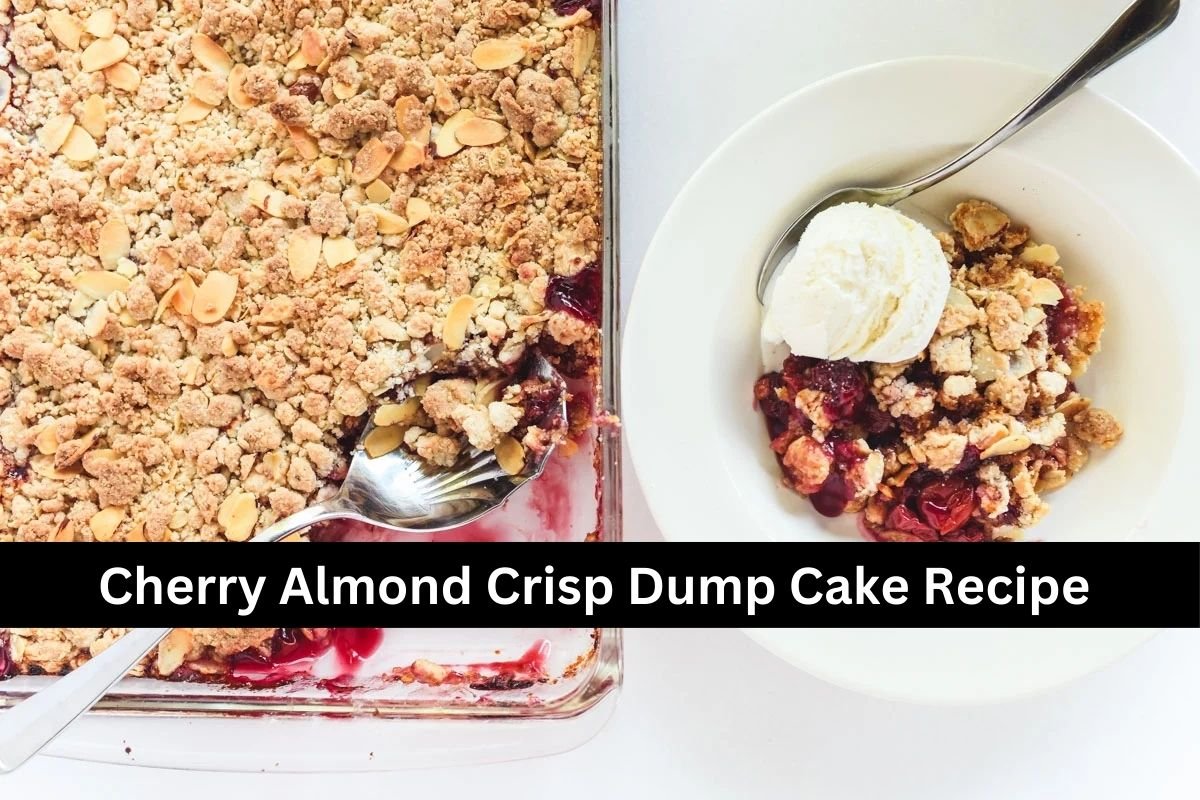Cherry Almond Crisp Dump Cake Recipe:- Have you given any thought to combining the planting of potatoes and cucumbers in your garden this year? It’s possible that you are wondering if it’s really a good idea. In this piece, gardening expert and homesteader Merideth Corhs investigates whether or not it is a smart idea to grow cucumbers alongside your potatoes this season, or whether or not you should stick to different companions for either food.
Cherry Almond Crisp Dump Cake Recipe
Having potatoes grow in your garden is actually a very enjoyable experience. The first time I cultivated potatoes in my garden, I was amazed at how differently they grew compared to cucumbers. I found everything about the difference to be fascinating. Every single thing that happens is taking place beneath the surface of the soil!
Making the decision to plant potatoes requires some forward thought and preparation. There are a great number of plants that thrive in close proximity to one another, but there are also a significant number of plants that do not. Radishes, lettuce, and spinach are just a few examples of vegetables that are excellent companions for potatoes. All of these vegetables have development habits that occur above ground and will not interfere with the tubers while they are growing.
The Long Answer
For the purpose of determining whether or not it is possible to interplant cucumbers and potatoes together, it is necessary to examine the requirements for their growth and to determine whether or not they are beneficial or detrimental companions to one another.
A practice that has been around for millennia, companion planting is often referred to as interplanting. The procedure is designed to mirror what you would observe in nature, which is plants growing together in a beautiful manner from one another.
A growing system that is made up of interconnected parts works together to grow in harmony. Every single one of the biological structures is cooperating with one another to develop plants that are more robust and resistant to a wider range of diseases and infections.
Reasons to Interplant
Companion planting is a choice that can be made for a variety of reasons. The benefits include the attraction of pollinators, which helps improve yield, the management of pests and diseases, the enhancement of flavor, the maximization of space and light, the suppression of weeds, and an additional number of benefits.
When you have a smaller family garden, it can also be an excellent approach for saving space in your home garden.
Reasons to Avoid Interplanting
Additionally, there are a variety of reasons why you should avoid interplanting particular species together. This is because certain plants will have a detrimental effect on the plants that are growing in close proximity to them.
Some plants, like garlic, have the ability to alter the flavor of other plants, while others attract insects that are even more damaging than the ones they attract. Those who are competing for sunshine will obscure anything that is in their immediate vicinity. And some of them compete with one another for the same resources, such as cucumbers and potatoes.
In order to develop and produce fruit, any plant that bears fruit needs a significant amount of water and nutrients. In light of this, why do we single out potatoes and cucumbers as being particularly competitive in terms of their nutrient content?
Even though many crops that are grown during the warm season, such as tomatoes, peppers, and cucumbers, are heavy feeders, they are able to coexist peacefully with one another.
Although their nutrient requirements are comparable, it appears that there is sufficient supply to meet everyone’s needs provided you pay attention to maintaining a constant fertilization schedule throughout the growing season.
Cucumbers can Spread Disease to Your Potatoes
Up until this point, we have discussed the issues that potatoes will bring for your cucumbers if they are planted in close proximity to them. By planting cucumbers and potatoes in close proximity to one another, a fungal disease known as potato blight can be transmitted from cucumbers to potatoes. This section is actually focused on the opposite of that.
The Phytophthora infestans fungus is the entity responsible for the fungal illness known as potato blight. Using airborne spores, it is possible for it to rapidly spread throughout a garden until it reaches a plant that is vulnerable to it. In dry weather, the spores remain dormant; however, once temperatures get warm and humid, they begin to develop and spread throughout the environment.
In only a few short days, potato blight may completely destroy an entire crop of potatoes, making it one of the most devastating challenges that a potato farmer can encounter. It is most well-known that potato blight was a significant factor in the Irish famine that occurred in the year 1840.
Additionally, both plants are susceptible to the common early and late blight as well. The likelihood of a single plant becoming infected with the fungal illness is significantly increased when these plants are placed in close proximity to one another. When a plant becomes infected, the disease immediately spreads to the plants that are nearby.
Final Thoughts
Although it may be tempting to pack as many plants as possible into our home gardens, it is essential to exercise caution when it comes to determining which plants are compatible with one another and which do not. As a result of reading this post, we are now aware that the most prudent strategy is to maintain a distance between cucumbers and potatoes in our gardens that is as great as feasible.
